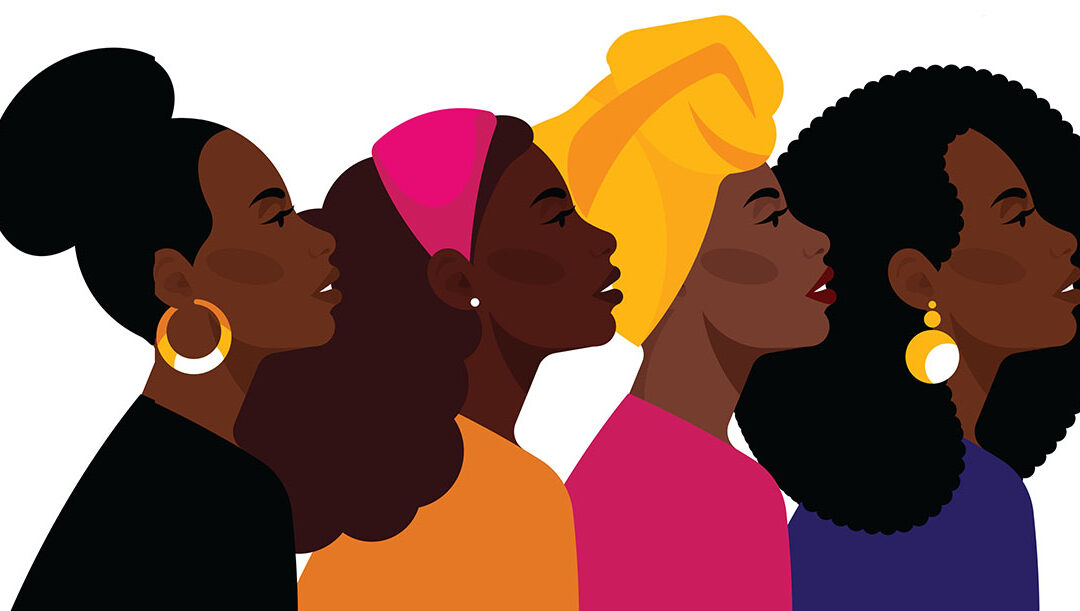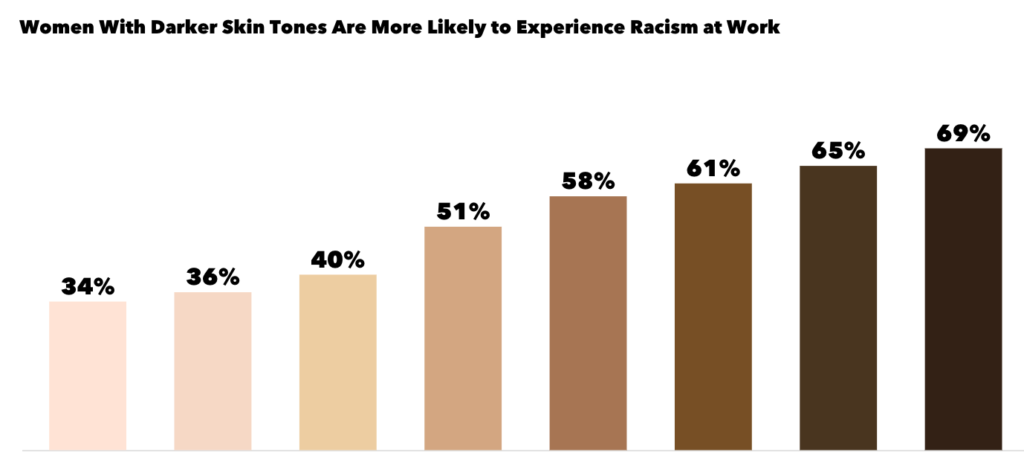From Colorism To Racism, New Report Reveals Black Women’s Workplace Challenges

A new report by Catalyst examining the experience women from marginalized ethnic groups have in the workplace has given a voice to those in the corporate world who often go unheard.
What did Catalyst’s exposé reveal?
The detailed report by Samantha E. Erskine, Ph.D., Sheila Brassel, Ph.D., and Kathrine Robotham, Ph.D., analyzed the experiences of 2,734 Black and brown working women based in Australia, Canada, South Africa, U.K., and the U.S.
The researchers investigated their experiences’ similarities and differences to properly understand their view of the corporate world. The report aims to show corporate leaders that intersectional racial harm in the workplace still exists and needs to be addressed immediately. For example, many women are still subject to discrimination in the office based on their racial and ethnic identity, skin tone, hair texture, and LGBTQ+ identity.

According to Catalyst, 51% of women from minority backgrounds have experienced first-hand racism in the workplace. Many have opened up about being exposed to overt and covert racism, with queer women with darker skin tones experiencing it even worse.
“Racism does not occur just in interpersonal interactions; it also manifests in the various systems of power embedded in the institutions that govern societies,” Catalyst reported.
The non-profit organization calls for corporate leaders to step up and take proactive steps to remove racism in the workplace. Previous reports by Catalyst have touched upon the important role allyship plays in creating a more inclusive environment – often leading to drastic changes in companies’ organizational climate.
“You can help repair intersectional racial harm and become the inclusive and anti-racist leader you want to be by engaging in allyship and curiosity. These day-to-day actions are key to creating a work environment where people from marginalized racial and ethnic groups of all genders feel comfortable speaking up.”
Key findings from the report
According to Catalyst, over half of women (51%) from marginalized racial and ethnic groups experience racism at work. Additionally, women with darker skin tones are more likely than women with lighter skin tones to experience racism at work.

The report also revealed that trans women (67%) and queer women (63%) are more likely than cisgender heterosexual women (49%) to be met with discrimination and racism at work.
Participants also did not feel their senior leaders were doing enough to create an anti-racist environment. For example, 49% of respondents did not feel like their senior leaders engaged in allyship.
Modern-day depictions of the brown paper bag test were found to still be prevalent in workforces, with women with darker skin tones being more prone to racism at work.
“I remember when I had box braids, and a co-worker said they were unprofessional and inappropriate for the workplace,” a Black woman from South Africa said in the report.
So, what is the solution?
The disheartening findings are likely due to growing global anti-Blackness, which is a worldwide epidemic within itself. The disdain and disregard people worldwide have for Black people has trickled into the workplace.
So, what is the solution? I believe these are a few practical solutions organizations need to adopt to create an anti-racist work environment. Firstly, stop ignoring your own unconscious bias toward Black people. Corporate leaders believe because they do not engage in everyday racism, this automatically makes them anti-racist. Many still uphold harmful stereotypes that manifest within the workforce.

For example, if you tend to see a Black woman expressing herself as a form of aggression or anger, you are still fuelling harmful and racist stereotypes. Suppose you see a group of Black employees together and feel the need to separate them due to fear for your safety or your self-imposed feelings of intimidation. You need to ask yourself where these thoughts stem from and why you still have them.
Secondly, stop ignoring racism because it makes you feel uncomfortable. Turning a blind eye to discriminatory practices because it forces you to look within yourself is not a viable solution to tackling racism in the workplace. Uncomfortable discussions are the primary source of change. Embrace it. Give your Black employees a microphone to amplify their experiences as loudly and boldly as possible without fear of repercussions.
Thirdly, get rid of performative tick-boxing. Being able to say you have a Black person on your team is no longer good enough. Stop hiring a token Black person and flaunting them as a badge of honor to show how diverse your organization is. Instead, how many Black people are advancing within your company? What is the turnover rate for Black and brown people within your organization? How many feel safe and heard? Prioritize collecting necessary data regularly to assess these things and take proactive steps from the top to the bottom to prevent a racist work culture.



